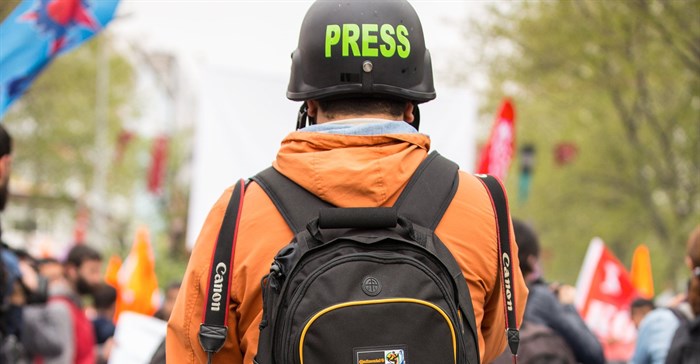From advertising blackmail to physical threats, Kenya's journalists are under attack - but they must also regain public trust

What are the major emerging threats against media freedom in Kenya?
Kenya’s media face threats from both state and non-state actors as repressive practices of the past reemerge. Government and opposition politicians are actively undermining media freedom in the country. This isn’t entirely new. But the threats have taken a new dimension as they are publicly defended – even boldly justified – by some of the perpetrators. These threats are economic, political and physical.
Economic squeeze. In what it claimed was a measure of austerity to curb government spending – but which was interpreted as a deliberate attempt to muzzle media criticism – the previous government established a media buying agency, the Government Advertising Agency. All government advertising is now channelled through this agency.
Critical media were and are now regularly “punished” through the withdrawal of government advertising. In the run-up to the August 2022 elections, one of President William Ruto’s senior policy men warned the media that they were best advised to look for advertising elsewhere as it would not be business as usual with state advertising.
Political threats. The emerging systematic media repression has also taken the form of brazen political threats from within the senior ranks of government. In what seemed like a well-calibrated attack by the ruling coalition, several politicians accused the media of being a “cartel” which needed to be “crushed”. These alarming sentiments were shared by the ruling party’s majority leader in parliament.
More draconian threats have included alleged plans to shut down media houses and the internet. Against the background of opposition protests in the country in March 2023, the Kenya Media Sector Working Group claimed the government had intended to shut down the broadcast media and the internet ahead of a planned demonstration. The president denied such plans. Meanwhile, opposition leader Raila Odinga called on his supporters to boycott the Star newspaper, a local daily, accusing it of bias. Even though he later withdrew the order, the disregard for the principles of media freedom was apparent.
Physical assaults. In what seemed like a return to the repressive 1980s during Kenya’s struggle for political pluralism, journalists were physically assaulted by the police and demonstrators in recent mass protests. Incredibly, the inspector general of police described the risk of assault as part of journalism’s “occupational hazards”.
What does the law say about media freedom?
Kenya has a relatively strong legal framework that supports media freedom. This is in addition to instruments like charters, treaties and declarations.
The freedom and independence of all types of media are guaranteed by Article 34 of the constitution. Articles 33 and 35 further guarantee freedom of expression and access to information, respectively.
Additional legislation includes the Media Council of Kenya Act (2013), which established the Media Council of Kenya. The council promotes and protects the freedom and independence of the media.
The Kenya Information and Communication (Amendment) Act (2013) established the Communications Authority of Kenya. It licences and regulates postal, information and communications services. The act gives the authority “independence from government, political or commercial interests”.
The East African Community treaty (1999), Article 19 of the Universal Declaration of Human Rights and the African Union’s Declaration of Principles on Human Rights in Africa (2002), all ratified by Kenya, advocate for media freedom.
Other key advocates for media freedom include the Kenya Union of Journalists, the Kenya Editors Guild and the Media Owners Association.
Are media outlets free of blame?
There is a growing public wariness about the performance of the media, which are increasingly being accused of partisanship and poor journalism.
The Kenyan media have always been embedded within the broader contests for political power forced upon them by media ownership structures. Journalists are also wedded to Kenya’s polarising, ethnically inflected politics.
A study of the structural conditions of journalism in Kenya describes the media culture as one that “fluctuates from critical to concordant, clientelist reporting”. Coverage can reflect the ethnic loyalties of the writers or media houses. This has eroded public trust in sections of the media.
Further, the media licensing regime has traditionally been transactional. Political support is rewarded with licences and access to state advertising.
Importantly, too, as economic challenges become existential threats to many media organisations, they have been forced to reduce their workforce, weakening gate-keeping processes.
These organisations also have to contend with the speed of social media as competitors. As the focus shifts to speed, quality is undermined.
The professional precarity of journalists afraid to lose their jobs has also made them susceptible to self-censorship and bribery.
What are the options for the media?
Continued exposure to advertising blackmail from the government weakens the media’s ability to operate independently. It is, therefore, critical that Kenya’s media find ways of diversifying their revenue streams.
Media organisations must continue to raise awareness about the importance of media freedom. They must push back against attempts to undermine their independence and encroach on their freedoms.
There are also enduring legal threats, such as the misapplication of laws like the Computer Misuse and Cybercrimes Act, which criminalises the publication of false information. Such laws are routinely abused and must, therefore, be fought.
Lastly, the media must continue investing in training and capacity building for journalists. The allure of speed in an attempt to compete with social media may be tempting, but it risks undermining ethical reporting, fact-checking and quality journalism.
This article is republished from The Conversation under a Creative Commons licence. Read the original article https://theconversation.com/from-advertising-blackmail-to-physical-threats-kenyas-journalists-are-under-attack-but-they-must-also-regain-public-trust-203580.

























